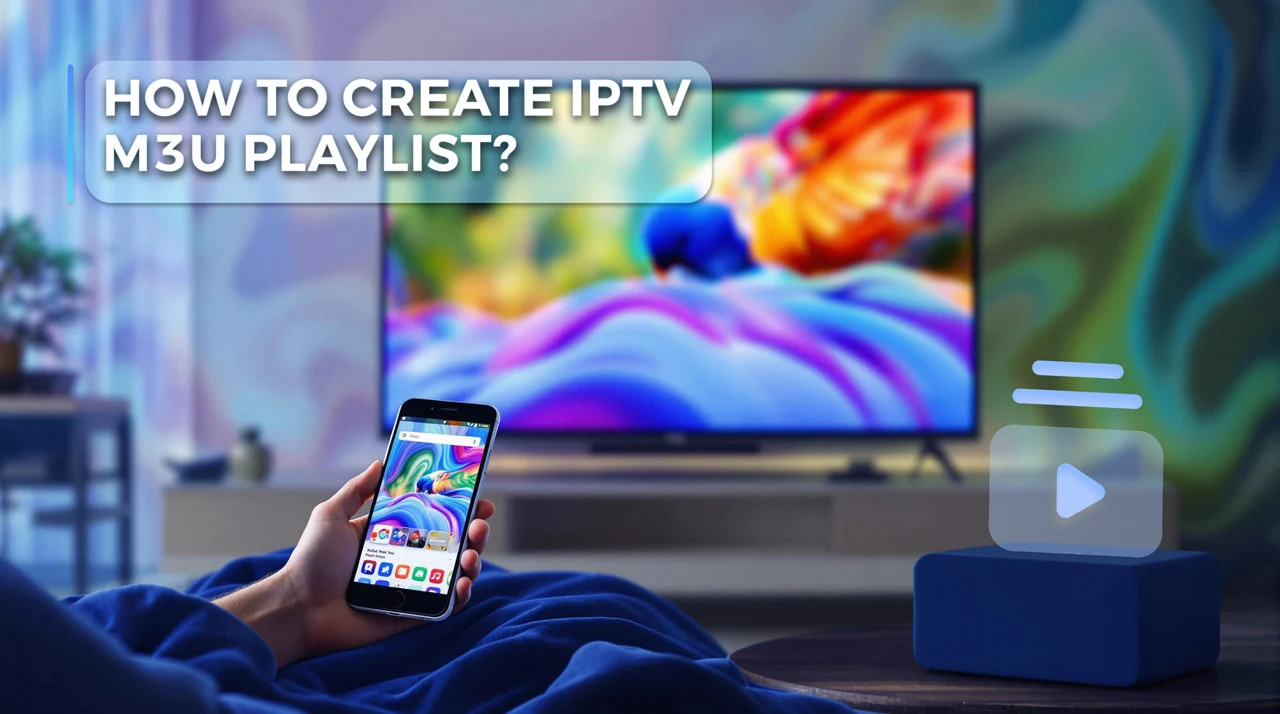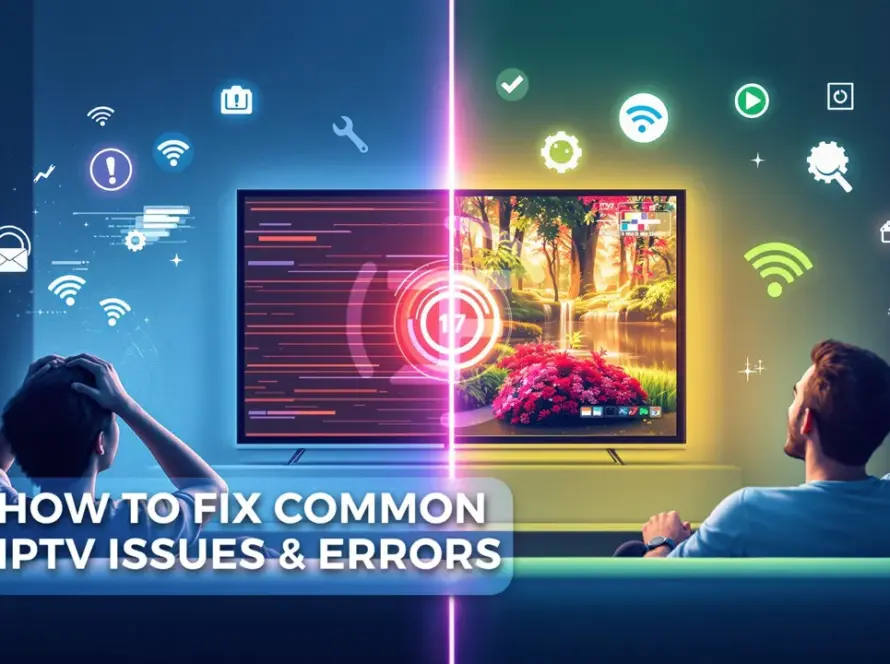Creating a free IPTV M3U playlist has never been easier, especially with resources available on GitHub. If you want to organize and access live TV channels and on-demand entertainment directly on your preferred player, this guide is here to help. We’ll walk you through the essentials of making a personalized M3U playlist, discuss why this format is ideal for IPTV, and show you how to make it work on various devices, from VLC to Windows Media Player.
With streaming options growing more diverse, learning how to create a playlist provides a powerful way to access free, global IPTV channels. This guide will save you time and resources and give you the tools to manage and update your playlist anytime you want.
What is an M3U Playlist?
An M3U playlist (stands for MP3 URL, although it’s not limited to MP3s) in full it is (Moving Picture Experts Group Audio Layer 3 Uniform Resource Locator) is a plain text file that contains a list of URLs pointing to media files, typically audio or video streams. Think of it as a curated directory for your media content. Instead of having to search for individual files scattered across your computer or the internet, an M3U playlist keeps everything organized in one place. You simply open the playlist in a compatible software (pot player or any other), and it automatically accesses and plays the media from the specified URLs.
M3U playlists are handy for organizing and managing large media collections, especially for streaming content like Internet radio or IPTV (Internet Protocol Television). They offer a convenient way to access various channels and streams without remembering or manually entering each URL. While commonly associated with IPTV, these playlists can be used for multiple purposes, including organizing personal music libraries, podcasts, or even collections of online videos. They are a simple yet powerful tool for efficiently managing and accessing media content.
How Does an IPTV M3U Playlist Work?
Building upon the previous section’s explanation of what an M3U playlist is, let’s delve into how it works within the context of IPTV. Imagine this playlist as a bridge connecting your media player or iptv player and the servers hosting the IPTV streams. Each line within the M3U file corresponds to a specific channel or piece of content, represented by its unique URL. To play m3u you need to open it in a compatible player like the (VLC media player), the player reads these URLs and connects to the corresponding servers. This connection lets the player retrieve and display the audio and video streams, effectively delivering the TV channels or on-demand content to your screen.
This process is remarkably straightforward. The player acts as an interpreter, translating the information within the M3U file into actionable instructions. It fetches the media streams based on the provided URLs and handles the playback. This simplicity is a key advantage of M3U playlists, making them accessible and user-friendly, even for those less technically inclined. It’s worth noting that the quality and legality of the streams themselves depend entirely on the source of the M3U playlist.
Where Can I Find Free M3U Playlists?
Finding free M3U playlists legally requires a cautious approach. While the internet offers numerous sources, it’s essential to prioritize legitimate options and respect copyright laws. One safe approach is to create your own M3U playlist using URLs of freely available, non-copyrighted content. This could include links to personal media stored on a cloud server, live streams of public events, or content explicitly offered for free distribution. This method ensures complete control over the playlist’s contents and guarantees legality.
Another avenue is exploring websites or platforms that offer curated collections of free and legal streaming content. These platforms often provide M3U playlists for easy access to their content library. However, you should verify the legitimacy of the playlist before using them.
Creating an M3U Playlist: Step-by-Step Guide
First, you need to compile a list of URLs pointing to your desired media content and save it in a plain text file with the “.m3u” extension. Here’s a step-by-step breakdown:
- Gather Your URLs: Compile them with the media streams you want to include in your playlist. Ensure these URLs point to accessible content.
- Open a Text Editor: Use a simple text editor like Notepad or Notepad++ (Windows) or TextEdit (Mac). Avoid word processors like Microsoft Word, as they may add formatting that can interfere with the M3U format.
- Add the M3U Header (Optional): While not strictly required, you can start your playlist with the tag
#EXTM3Uon the first line. This identifies the file as an M3U playlist. - Add Your URLs: Paste each URL into the text file, one URL per line. If desired, you can add metadata before each URL using the
#EXTINF:tag. For example:#EXTINF:-1,Channel Namefollowed by the URL on the next line. The “-1” indicates an unknown duration, and “Channel Name” provides a descriptive label for the stream. - Save the File: Save the file with a descriptive name and the “.m3u” extension, such as “MyPlaylist.” m3u. “
That’s it! You’ve created your own M3U playlist. Now, open it in a compatible media player to access your curated list of streams. Remember, this method is ideal for managing personal media or accessing legally available online content. It empowers you to tailor your viewing experience without using potentially illegal sources.
Choosing the Right Media Player for Your M3U Playlist URL
Now that you have your playlist, you’ll need a compatible player to stream your content. Fortunately, many options exist, each with its strengths and weaknesses. VLC media player is a popular choice, due to its broad compatibility with various media formats, including M3U playlist URLs. It’s free, open-source, and available on multiple platforms (Windows, macOS, Linux, Android, iOS). Its versatility and ease of use make it a solid option for most users.
Other media players also support M3U, such as Windows Media Player, Kodi, iptv Pro, iptv smarters Pro, and various mobile apps designed specifically for the intent to work m3u IPTV. When choosing a player, consider factors like platform compatibility, supported features (like EPG or electronic program guide), user interface, and any specific requirements you might have. Some players offer advanced features like playlist management, customizable skins, skip to content, and network streaming capabilities. Ultimately, the best choice depends on your individual preferences and technical setup. Experimenting with different players can help you find the one that best suits your needs.
Using VLC
VLC media player stands out as a versatile and user-friendly option for playing M3U playlists. Opening these in VLC is simple:
- Run App: Launch the application on your device.
- Open the Playlist: Navigate to “Media” in the menu bar and select “Open File.” Locate your M3U playlist file and click “Open.” Alternatively, you can simply double-click the M3U file, and it should open automatically in VLC if it’s set as the default application for M3U files.
- Playback: It will parse the playlist and display the available channels or media content. Select the desired stream to begin playback.
VLC’s intuitive interface makes navigating and managing your M3U playlists straightforward. You can easily switch between tv channels, control playback, and adjust settings like audio and video output. Furthermore, VLC’s open-source nature and active community ensure ongoing development and support, making it a reliable choice.
Troubleshooting Common Issues
Occasionally, you might encounter issues when using these playlists. Here are some common problems and troubleshooting steps:
- Playlist Not Loading: Double-check that the file has the correct “.m3u” extension and that the URLs within the playlist are valid and accessible. Typos in URLs are a frequent culprit.
- Streams Not Playing: Ensure your internet connection is stable and that the servers hosting the streams are online. The issue might be temporary server downtime or a problem with your network. If it is a network issue try using VPN.
- Incorrect Channel Information: If channel names or EPG data are incorrect, the issue likely lies with the source of the playlist. Consider finding a more reliable source if inaccuracies persist. free m3u playlists, most of the time have these kinds of issues as their EPG is not regularly updated.
- Buffering Issues: Buffering can result from a slow internet connection or overloaded servers. Try reducing the streaming quality or switching to a different server if available. You can also try switching between, the (ts) or (m3u8) format within
If problems persist, you should contact support if you have paid for the service or search through online forums and communities dedicated to IPTV. Media players can be valuable resources for finding solutions. Remember to describe the issue clearly and provide relevant details about your setup to receive effective assistance.
Best Practices for Managing
Managing your playlists effectively can enhance your streaming experience. Here are some best practices:
- Regular Updates: If using playlists from online sources, check for updates regularly. Providers often update their playlists to add new channels, remove defunct ones, or improve stream quality.
- Organization: If you have created your playlist, organize it logically. You can create separate playlists for different genres, languages, or content types.
- Backups: Create backups of your playlists, especially if you’ve curated them manually. This will save you effort and prevent the accidental loss of a carefully compiled list of streams.
- Use a Good Text Editor: A dedicated text editor with syntax highlighting and other features can make editing and managing M3U playlists easier, especially for larger playlists.
- Verify URLs: Periodically check the URLs in your playlists to ensure they are still valid and working correctly. This helps prevent frustrating interruptions during playback.


